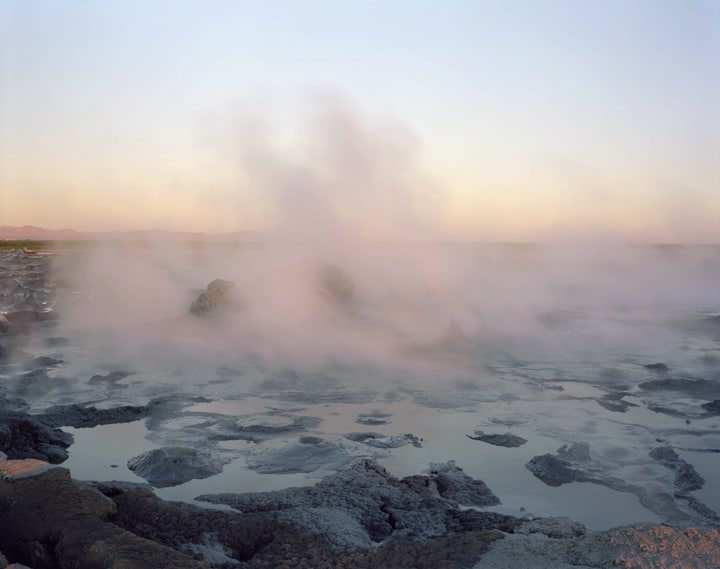
“There is a place in the California desert where a pipe pokes out from a berm made of broken concrete and delivers freshwater to a dying sea. I stood there recently, on a beach of crumbled barnacles, and watched it gush. The sea was the dull blue of a cataract, surrounded by small volcanoes, bubbling mud pots, and ragged, blank mountains used for bombing practice by the Navy and the Marines. The air smelled sweet and vaguely spoiled, like a dog that has got into something on a hot day. When the wind blew, it veiled the mountains in dust and sent puckered waves to meet the frothy white flow from the pipe. The sea, which is called the Salton Sea, is fifteen times bigger than the island of Manhattan and no deeper in most places than a swimming pool. Since 1924, it has been designated as an agricultural sump. In spite of being hyper-saline, and growing saltier all the time, the sea provides habitat to some four hundred and thirty species of birds, some of them endangered, and is one of the last significant wetlands remaining on the migratory path between Alaska and Central America.”
Letter from the Imperial Valley, May 4, 2015 Issue
The Dying Sea
What will California sacrifice to survive the drought?
By Diana Goodyear
http://www.newyorker.com/magazine/letter-from-the-imperial-valley
“Our pilot, David Kunkel, asked me to retrieve his oxygen bottle from under my seat, and when I handed it to him he gripped the plastic breathing tube with his teeth and opened the valve. We had taken off from Boulder that morning, and were flying over Rocky Mountain National Park, about thirty miles to the northwest. We were in a Maule M-7, a single-engine “backcountry” plane, and Kunkel was navigating with the help of an iPad Mini, which was resting on his legs. “People don’t usually think altitude is affecting them,” he said. “But if you ask them to count backward from a hundred by sevens they have trouble.” What struck me at that moment was not how high we were but how low: a little earlier, we had flown within what seemed like hailing distance of the sheer east face of Longs Peak, and now, as Kunkel banked steeply to the right to give a better view of a stream at the bottom of a narrow valley, his wingtip appeared to pass just feet from the jagged declivity beneath. Snow had fallen in the mountains during the night, and I half expected it to swirl up in the plane’s wake.”
A Reporter at Large, May 25, 2015 Issue
Where the River Runs Dry
The Colorado and America’s water crisis
By David Owen
http://www.newyorker.com/magazine/2015/05/25/the-disappearing-river